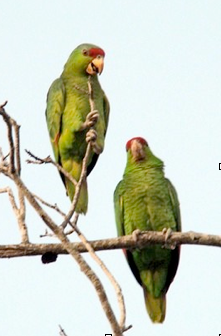Gasland takes a folksy, low-key, Will Rogers (aw shucks never met a man I didn’t like) tone. Fox narrates his investigative road trip strumming a banjo, sometimes wearing a sinister-looking black respirator. The open naïf tone is beguiling indeed, and disturbing. Images of water flaming as it runs from a faucet, gas bubbling up in a seep, a wildlife stream kill evidently caused by a chemical spill. The hard-scrabble American farm workers interviewed have had their lives ruined by a fracking accident - breathtaking destruction.
I think the film feels like it was made by a young person, influenced by Michael Moore documentaries. Unlike Moore, Fox never becomes a irritating noodge.
The best scenes in the film are the musing quiet reflections Fox makes as he surveys the beautiful quiet stream behind his family home, wondering if it’s fresh and vulnerable state will be sustained. They’re sensitive, beautiful, and ache with loss.
Issues arise: Gasland doesn’t attempt a balanced perspective. That’s for us to attempt. No doubt the fracking issue will be resolved with more galling environmental compromise decisions, all delaying the speed we reach the Tipping Point of ecological disaster.
I do feel more informed. My consciousness is further raised. I do think that current energy policy, “all of the above, in some combination”, really is the only direction. May it be tempered with care about beautiful America as much as growing our consumer lifestyle.
II. Background
Major legislation passed in 2005, The Air and Clean Water Act, lulled Americans’ concerns about land and water pollution. Great, we’ve preseved our water. What the citizenry didn’t understand, however, was that there was a little-noticed “Halliburton Loophole” which exempted gas and oil drilling from the act. Gas and oil companies are not required to disclose the chemicals used in the hydraulic fracturing process, as toxic as they are.
As Americans appetite for energy grows, the use of “fracking” natural gas extraction techniques seems to be the magic answer to our energy problems. It is, potentially, one of the most destructive of the “all of the above” energy-production industrial processes.
Consider the map above: when the the shale formation and river drainage system maps are overlaid, one understands the magnitude of risk that fracking presents to poisoned water and land.
The process can cause gas bearing layers....[to connect]... with water bearing layers....this technique breaks the geological barriers that have protected fresh water aquifers and the surface for millennia.... those very large volumes of fracking fluids left underground will move and are already moving and contaminating aquifers and surface waters. (information from Gasland’s website).
Do fracking operators have any option to restore the underground geological structure they’ve damaged? I remember the subsidence issue in Long Beach as a child. Pumping the harbor area caused it to sink about 29 feet, and the subsidence “bowl” was 20 miles wide. The problem was alleviated by pumping water back into the area, and enabled oil drilling to continue.
The subsidence caused compression, so I worry that fracking will crack the layers below the earth, causing aquifers to drain, collapse, and violent compressions of the substrate.
It appears from the film that individuals who have polluted water experiences have no recourse except to hire a lawyer. Proving cause/correlation is their burden. Public agencies do not generally have agency or license to investigate and/or prosecute. This seems a grave injustice, and also very environmentally short-sighted.
Once their property is polluted, they sell cheaply to the gas company - if they’ll buy - (fracking empties the gas supply rapidly) and move on, from their family farm or small town to whatever hardscrabble life they can find. Or they stay, supported by jerry-rigged water storage systems or by purchasing fresh water directly.
Fracking also releases methane, which if not recovered during the process, but is released into the atmosphere, adds significantly to the consequences of global warming.
Sad, so sad. I don’t think we even need all the gas ourselves. The new pipeline terminates in New Orleans, suggesting shipping possibilities to supply overseas demand. China, for instance, relies on coal. Selling them gas might help our balance of payments. The payoffs, the sacrifices. They are lamentable.
How long do we really have? The beautiful world is so ruined.





















